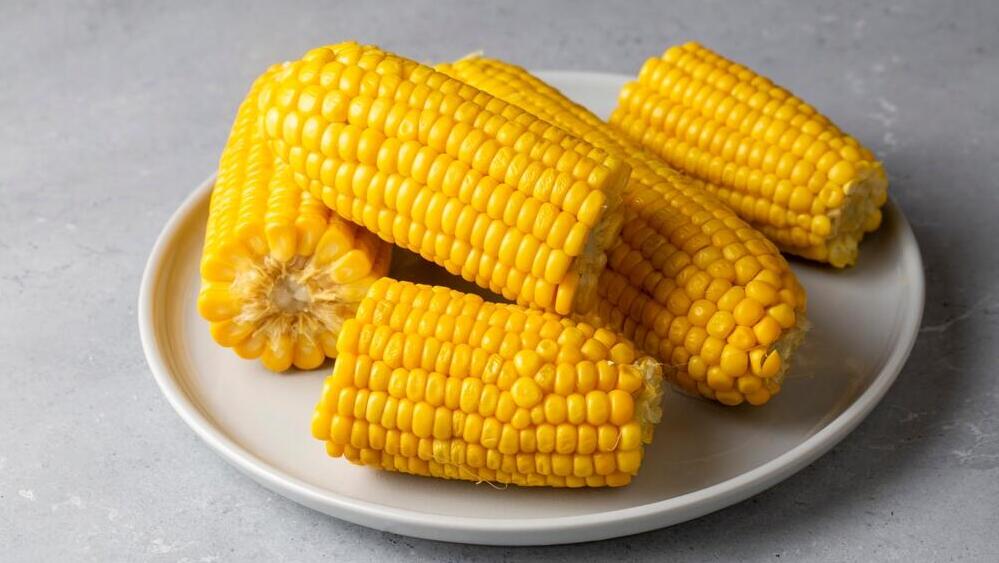Getting your Trinity Audio player ready...
Once a quintessential symbol of the Israeli summer, corn is now available almost year-round. Despite summer being its peak season, corn has been grown in Israel nearly every month of the year for many years, sometimes under plastic sheets creating the microclimate needed for the plant to thrive.
Corn is a staple in the global diet, sometimes even surpassing rice and wheat. A quick trip to the supermarket reveals that most products contain corn: soft drinks, sweet spreads, baby formula, breakfast cereals, snacks, baked goods, and more. Over time, more and more disposable utensils made from corn polymer, as well as bags and kitchen utensils, have also become available.
The United States is the largest corn grower in the world, producing over 350 million tons a year. It is also the largest consumer of corn, exporting only about 50 million tons. There are numerous corn varieties for different uses. In Israel, several varieties of corn are grown, each suited for different uses: for industry, animal feed, popcorn, freezing, canning, and fresh edible corn, which itself comes in several different varieties and levels of sweetness.
"When we started marketing sweet corn, we thought people would go crazy for it, but the Israeli market rejected it," says Yoav Sonino, one of Israel's veteran corn growers and the person behind the breakout of the country's most well-known corn - Gili corn. Sonino began his agricultural career at a young age in Kibbutz Kabri. He led significant projects in the agricultural world and today grows corn on 3,000 dunams in the Gedera region. He named his corn after his wife, Gila. "We did many trials to spread sweet corn, but it didn't catch on. Eventually, two branding experts, Chaya and Yiftach Leron, turned sweet corn into a brand, Gili corn. People realized you could even eat it raw, and it became a sensation."
Sonino adds that Michal Ansky and Shir Halpern, who founded the Farmers' Market and paved the way for high-quality produce from farmers to reach knowledgeable consumers and food enthusiasts, also share in the success.
Corn is a healthy grain rich in nutritional values, including dietary fiber, antioxidants, vitamin B1, and folic acid. Despite its sweetness, corn has a low glycemic index, meaning its sugars break down slowly in the body and moderately raise blood sugar levels. The calorie content and carbohydrate level in sweet corn are not necessarily different from regular corn.
Not all corn is yellow. While yellow is the most well-known and common color, mutations in the plant have produced red, white, purple, black, and even colorful corns. Generally, there is no relationship between the color of the corn and its taste, meaning not all white corns are sweet, and not all yellow corns are not sweet, and so on.
"Corn is a unique grain where you can actually see how the plant fertilizes itself," says Sonino. "The corn silk is the female flower; it is essentially a conduction tube that transfers the pollen to the kernel, and the number of silks will always match the number of kernels." Sonino also explains that corn is a very smart plant, knowing how to plan its growth according to the resources it identifies. "Around the sixth or seventh week of the plant, the corn pauses for a moment to calculate all the data, and thus determines its potential, including how many rows of kernels it will have, always an even number, by the way."
You should definitely bring fresh corn into your kitchen. Whether it's regular or sweet, you can make countless dishes with it. First of all, it's always fun to eat corn on the cob, especially at the beach. Corn's best friend is butter. You can also make interesting salads with it, savory pastries combined with cheese and corn, grill it if you've already lit the barbecue, put it on pizza, mix it with pasta, in various desserts, and even in chicken or seafood dishes.



